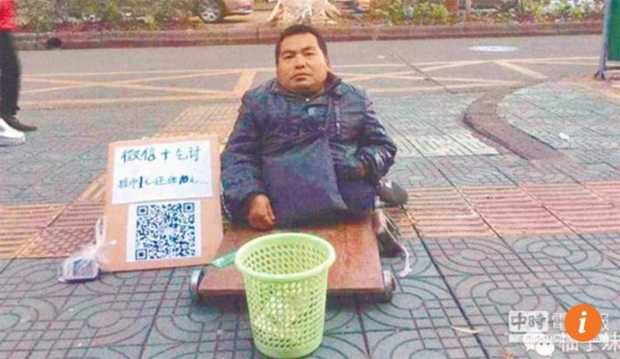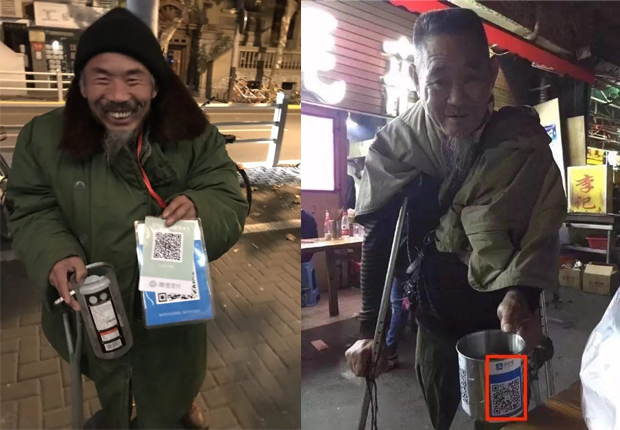|
If you still have any doubts that mobile devices have taken over our
lives, this should make you a firm believer: smartphones and QR codes
have become tools of the trade for Chinese beggars. If you’re feeling
generous, you can simply whip out your phone, scan a a printed QR code
and transfer some money to the beggar’s account.
|
|
 |
|
Local media have spread news of mobile-savvy beggars in the city of
Jinan, in China’s Shandong province. They gather in areas popular with
tourists, holding begging bowls that contain a QR code printout. Anyone
with Alipay, WeChat Wallet, or some other mobile payment app can scan
the code and make a donation. Wait, beggars in China have mobile phones?
Well, according to state media outlets, that’s not actually a rare
thing.
One of the beggars who caught the media’s attention was reportedly a man
with mental problems and the QR code he had was made by his family to
help him. However, it appears that QR code begging serves other purposes
besides generating income for people down on their luck. According to
digital marketing company China Channel, many beggars in Beijing receive
payment from local businesses for every QR code scanned by passers-by.
The enterprises use these scans to collect people’s data from WeChat
profiles, then sell the IDs for quite a pretty penny to small
businesses. The latter use the information to bombard the users with
unsolicited in-app advertisements.
|
|

|
|
Since passers-by don’t actually have to give any money, they are not all
that difficult to persuade. However, the “beggars” get paid for their
efforts: each QR code scan pays between 0.7 and 1.5 yuan ($0.10 to
$0.22). A 45-hour working week nets a monthly average of 4,536 yuan
($685), which is quite decent given what Chinese workers in minimum wage
jobs get.
The whole thing may sound weird to foreigners, but it must be noted that
China is perhaps the country closest to a cashless economy and QR codes
are the reason for that. The black-and-white, two-dimensional barcodes
are used in all sorts of ways: from payment in shops to tips in
restaurants and cash gifts at weddings. In fact, mobile payments in
China exceed 50 times the volume for the US, where the 2016 tally was
$112 billion.
According to consumer behavior researcher Chen Yiwen, China is on the
verge of a“codeconomy.”
|
|
 |
|
“China has started the transition to a cash-free economy faster than
anyone could have imagined, largely because of the viral spread of
two-dimensional barcode. It creates a new economy based on scannable
codes.”
Interestingly, Western beggars are not that far behind their Chinese
peers, when it comes to mobile payments. A few years ago, professional
beggar Damien Preston-Booth made headlines for using a mobile card
reader and accepting donations via credit card. |
|
|
|
|